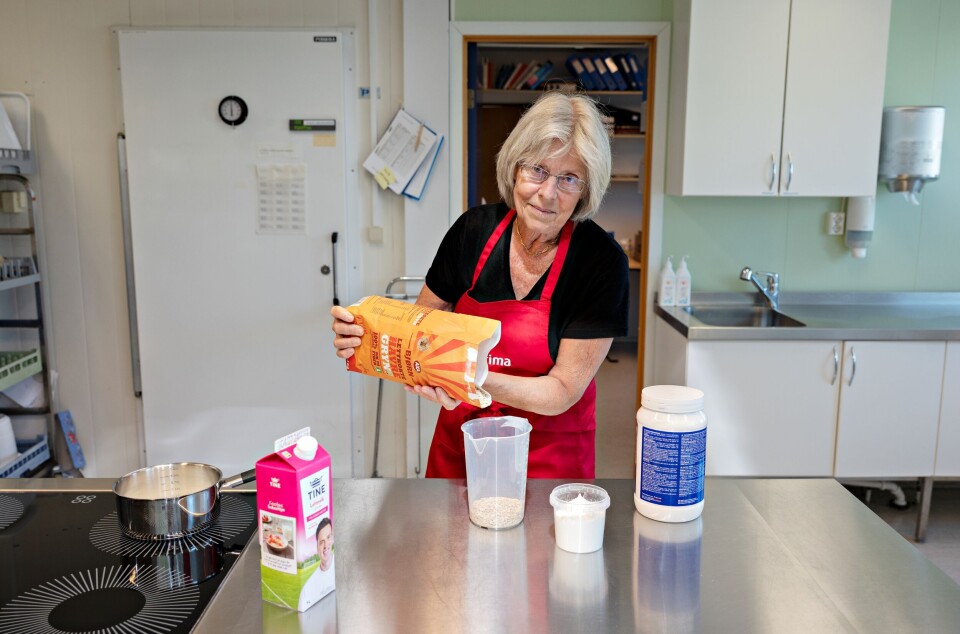THIS CONTENT IS BROUGHT TO YOU BY Nofima The Norwegian Institute of Food, Fisheries and Aquaculture Research - read more

You need more protein from the age of 55
Many people are not aware that they need more protein and more vitamin D as they get older. Researchers have investigated how to prevent malnutrition in the elderly.
The protein requirement increases many years before you start to feel old. Protein is essential for maintaining muscle mass.
“We get enough protein in our diet in Norway. But as you get older, there are several factors that make you eat less. For example, you feel full faster. We have seen what people over the age of 70 eat and what it takes to increase the content of protein and vitamin D in their diet,” says Øydis Ueland.
She is a senior scientist at Nofima.
Researchers want to prevent malnutrition in the elderly
Together with researchers from several European countries, Ueland and her colleagues at Nofima have investigated what it takes to convince people over 70 that they should enrich the food they make at home.
The researchers aim to reach those who are, or are at risk of becoming, malnourished. The most important thing is that the elderly should not feel that cooking becomes more demanding or very different.
"This is intended for elderly people who live at home and who cook their own food. Maybe they have slightly reduced opportunities and don't have the energy to vary so much, so they would like to continue making what they are familiar with,” says Ueland.
The researchers have experimented with simple ways to add more protein to food, preferably to the dishes the elderly already eat regularly, without making the preparation more difficult or altering the taste of the dishes.
They started by finding ingredients with high protein content that could be added to the food. There is a wide variety of protein powders available, but these often have flavourings, making them unsuitable for many dishes.
"Ideally, the protein powders should be added to both cold and hot, and sweet and savoury dishes, and they should not alter the taste of the food. We have tested two neutral protein powders based on milk and soy,” she says.
Popular dishes
For the researchers, it was important to identify which dishes are most popular. The participants in the study are over 70 years old and live in either France, theUK, or Norway.
The participants were asked to keep food diaries. These countries have quite different eating habits. Based on the food described in the diaries, a selection was made of dishes that are common across all three countries: oatmeal, granola, french toast, pancakes, mashed potatoes, muffins, carrot soup, and pasta bolognese.
“Based on these dishes, we got a chef to develop recipes where the protein ingredients were added so that we could increase the protein content of the dishes. The participants found it useful, fun, and very educational. They liked the dishes a lot and would continue to cook them. However, most thought that protein enrichment is probably better suited when they get a little older,” says Ueland.
This attitude was not unexpected. It is a known phenomenon that you do not perceive yourself as older until your health is weakened. However, you actually need a more protein-rich diet long before that, even as a preventive measure.
Scepticism towards protein powder
An important insight from the study is that most people are sceptical about using protein powder to enrich their food. They don't feel like adding an unfamiliar powder to familiar dishes. It's a bit scary.
Many like to take supplements in tablet form, but having the supplement in the food itself, that's something else.
“It's very difficult to get people to understand that they can easily take supplements that they don't think they need. But this is a better way to maintain a good diet than drinking energy drinks that cost a fortune or getting energy shots at the nursing home. It's easier to do something about the daily diet,” she says.
Try this at home!
Although the coming generation of older people is used to trying new dishes and eating food from all over the world, there is a limit to what they can do when they reach an age where everything takes more time and effort.
Therefore, enriching the food they prepare themselves in a simple way can be a good option.
The recipes from the project will be processed and simplified. In the meantime, Øydis Ueland advises people to try it themselves at home:
“Just think: ‘Can I add protein powder to something I make?’ You can add it to sauces, casseroles, or to mashed potatoes from a bag,” she says.
References:
Geny et al. Acceptability of protein-fortified recipes in older adults in France, Food Quality and Preference, vol. 118, 2024. DOI: 10.1016/j.foodqual.2024.105205
Smith et al. Older adults' acceptability of and preferences for food-based protein fortification in the UK, France and Norway, Appetite, vol. 197, 2024. DOI: 10.1016/j.appet.2024.107319

This content is paid for and presented by Nofima The Norwegian Institute of Food, Fisheries and Aquaculture Research
This content is created by Nofima's communication staff, who use this platform to communicate science and share results from research with the public. Nofima is one of more than 80 owners of ScienceNorway.no. Read more here.
More content from Nofima:
-
Red algae grown in wastewater from fish-farming facilities could become sustainable salmon feed
-
Pumpkins are good for more than just Halloween decorations
-
This is how temperature affects a salmon's health and growth
-
Study: Omega-3 and zinc is a powerful duo for salmon
-
Fish may turn yellow if frozen too fresh
-
Is it better if food is packaged in plastic or paperboard?





































